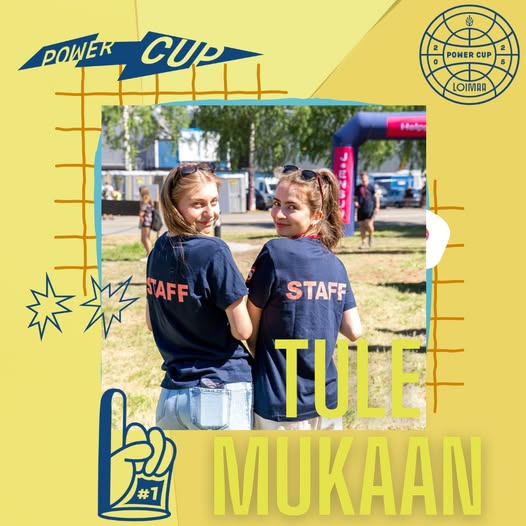Miten museoista tehdään paikkoja, joissa ikämiehet vierailevat useammin? CoMe Stronger -hanke vastaa tähän kysymykseen kääntämällä roolit toisinpäin: ikämiehet eivät ole…
Tekijät | Authors

Leadership in Context: Sports, Business, and the Danger of Simple Analogies
Sports metaphors are everywhere in business. From CEOs rallying their ”teams” to sales managers chasing ”goals,” the language of the locker room echoes in the boardroom (see, for example, Ross 2022).
Having worked in, and with, both sports and business, I’ve learned we can’t simply copy-paste leadership lessons from one arena to another. As we often conclude at leadership forums, “there is no universal leadership model – context really matters.” Whether you’re coaching a football team or managing a sales department, effective leadership is related to understanding the unique context.
This article examines what leadership lessons transfer from sports to business, where the differences lie, and why blindly applying a sports playbook to corporate life can be dangerous.
No One-Size-Fits-All Playbook for Leadership
Every arena – sports, business, government, academia or otherwise – has its own rules of the game. A concept that wins a championship in one context might flop in another. For example, a passion-filled halftime speech that motivates athletes might confuse engineers in a tech firm or teachers in the university of applied sciences.
In other words, leadership is always context dependent. Research backs this up: leadership in a professional ice hockey team, for instance, looks very different during a game (where split-second, nonverbal coordination is important) versus off the ice (where planning and reflection happen) (Ryömä 2015). So, what works in a locker room may not work in a boardroom, and vice versa. Therefore, leaders should be able to adapt their leading style to the situation, rather than relying on a single “universal” approach.
Parallels and Contrasts Between Sports and Business
However, if we increase the abstraction level, we can state that there surely are clear similarities between leading a sports team and leading a business. In both, success requires a vision, teamwork, talent development, and the drive to win against competition. It’s no surprise that corporate leaders often draw inspiration from coaches. A good example of this is the fact that LinkedIn is full of posts by businesspeople titled “What Phil Jackson (legendary NBA coach) teaches about team-building,” and similar themes.
Success requires a vision, teamwork, talent development, and the drive to win against competition
However, the differences are at least as important to acknowledge. Sports operate on tight cycles (season) with immediate feedback (the score), whereas business timelines and metrics are usually longer and more complex. Sports leaders also face intense public scrutiny from fans and media, while business leaders rarely have every decision analyzed on the evening news, newspapers and especially in social media.
Summarizing, as management researcher Jan-Michael Ross (2022) noted, “not all sporting insights neatly translate into simple management lessons.” In fact, they can often oversimplify or even mislead.
High-Pressure Decision-Making
In sports, leaders live in the moment. Matches can be won or lost in seconds, so coaches and players must make lightning-fast decisions with no time for hesitation and indecision. Think of a basketball or an ice-hockey coach calling a timeout and drawing up a last-second play – there’s immediate, high-stakes feedback on that choice.
In business, by contrast, decisions often unfold over days, weeks, or months, with significantly more room for analysis and consultation. In other words, there is much more time to consider the next move. The lesson for business leaders could be not to rush every call, but to cultivate the decisiveness and clarity that sports demands when the pressure is on. Use the time you have, but when the situation calls for swift action, don’t be shy to make the tough call. Overall, it can often be said that the best decision is the made decision!
Use the time you have, but when the situation calls for swift action, don’t be shy to make the tough call
Under the Spotlight: Media and Fan Pressure
In sports, especially in professional sports, every action is closely followed by different stakeholders. Coaches and players are analyzed by sports journalists, debated by fans on social media, and pressured by entire communities’ expectations. A national team coach of Finland’s ice hockey team in the Olympics, for example, knows that millions of success-hungry Finns are following every decision they make.
Business leaders, on the other hand, usually operate behind closed doors. Apart from maybe CEOs of biggest brands, most managers don’t have total strangers second-guessing their every move on a daily basis.
You don’t have to give a press conference after a poor quarterly result, but you do need to address concerns sincerely and transparently with your stakeholders
So, the sports world teaches leaders to communicate clearly and keep calm under criticism. Business leaders can learn from this – being transparent and calm during a crisis, for instance – but they should avoid creating a locker-room drama where it doesn’t exist. You don’t have to give a press conference after a poor quarterly result, but you do need to address concerns sincerely and transparently with your stakeholders.
The Crucial Role of Volunteers
Another unique aspect of sports leadership is the reliance on volunteers. Sports organizations – especially at the grassroots and event level – often depend on dedicated volunteers to run operations. For example, organizing Power Cup (the world’s largest junior volleyball tournament, taking place in the small Finnish town of Loimaa in 2025) requires over 700 volunteers.

Picture 1. Advertisement of the world’s largest junior volleyball tournament.
I’ve seen how crucial it is to inspire people who aren’t motivated by money but by passion. Leadership in this context means appealing to values, giving positive feedback and public recognition to pro bono contributors, and structuring operations in a way that builds the community around sports clubs. Not as easy as it may sound.
The takeaway is to foster a strong team spirit and shared purpose, so that people feel to be a part of something bigger, something meaningful
In business, most team members are paid professionals, but the lesson still applies: not everyone is driven purely by salary. Employees need purpose and recognition, too. Sports remind us that intrinsic motivation can be a powerful force. However, corporate leaders must remember that, unlike sports volunteers, employees can’t usually be expected to give nights and weekends for free – there needs to be a balance of mission and reward. The takeaway is to foster a strong team spirit and shared purpose, so that people feel to be a part of something bigger, something meaningful. Of course, this is much easier in the sports context, but I argue that we can find at least some features of this kind of passion also in many growth companies.
Balancing Talent and Teamwork
Sports history is filled with examples of superstars failing to clinch the title until they embrace the team. Michael Jordan was a phenomenal baller, but it is often stated that the legendary Chicago Bulls became a NBA-dynasty only when he started to trust and involve his teammates. No single star, no matter how brilliant, can carry a team alone.
”Talent wins games, but teamwork and intelligence win championships.” — Michael Jordan
In business, too, a collection of top-level and talented individuals isn’t enough unless they are able to cooperate. A top sales closer might shine like a goal-scorer, but a company’s sustained success also requires collaboration, knowledge-sharing, and supporting roles. Without these roles, there are no opportunities to close deals. Great leaders know how to balance individual brilliance with collective effort. They set up systems where the “MVPs” help raise the game of everyone else and reward team success over solo heroics. This way, the organization wins together.
Shared Leadership: More Than One Captain
Leadership theory acknowledges numerous styles, such as transformational, transactional, servant, and democratic leadership (Northouse, 2019). Although sports have traditionally been associated with authoritarian or directive leadership styles—where the coach maintains tight control and decision-making power—research and practice increasingly highlight the effectiveness of shared or distributed leadership in successful sports teams (Cotterill & Fransen, 2016).

Picture 2. The best teams don’t rely on a single leader.
In other words, the best teams don’t rely on a single leader. Captains, assistant captains, veteran players, and coaches all share responsibility. For example, in ice hockey, the head coach—together with their assistants—sets the overall strategy, but the team captain and other key players lead on the ice in real time, making decisions and motivating teammates. This distributed leadership makes teams more resilient and responsive. And in well-functioning teams, if one leader is, for some reason or another, having an off day, another steps up.
Shared leadership ensures that everyone takes ownership of the mission, not just those with a certain title
Businesses are increasingly adopting similar models. Effective organizations empower multiple leaders at different levels—project and sales leads, sales coaches, and so forth—rather than funneling everything through one boss. The key is to define roles clearly (just as a coach and captain have distinct duties) to avoid confusion. When done right, shared leadership ensures that everyone takes ownership of the mission, not just those with a certain title.
When Sports Lessons Don’t Translate
It’s tempting for business leaders to fill their talk with sports quotes and locker-room slogans. But taken too literally, sports leadership models can be misleading when applied in a very different context. The truth is that a company is not a sports club – the stakes, timeframes, and motivations differ.
Leaders must adapt lessons to fit their reality. Sports can inspire – teaching us about resilience and teamwork – but they are not one-size-fits-all solutions.
Blindly applying a sports metaphor can oversimplify complex business situations (Ross, 2022). For instance, in a business context, urging your staff to “give 110 %” every day may not be sustainable in the long term. Similarly, benching an employee after one bad week isn’t as straightforward (or advisable) as benching a player for a bad game. Leaders must adapt lessons to fit their reality. Sports can inspire – teaching us about resilience and teamwork – but they are not one-size-fits-all solutions.
Different Games, Different Rules
The best leaders expand their horizons by learning from other fields – but they always tailor those lessons to their own arenas and industries. Going forward, leadership development should embrace a cross-sector approach. I saw this firsthand at the Second Workshop on Intersectoral Working: Contemporary Leadership in Different Contexts, held on 14 March 2025 at University of Turku, where experts from different sectors exchanged stories and insights. The shared realization was clear: each context demands its own adaptations, and there truly is no one-size-fits-all formula.
Future leadership training can borrow the best practices from sports – like team-building exercises, real-time feedback, or resilience training – but must modify them for the business context. A company might use sports-style team huddles for quick updates, yet remain mindful that not every day is a championship game.
I am currently researching leadership in professional ice hockey with my former colleagues from the Turku School of Economics (University of Turku), Dr. Arto Ryömä and Dr. Johanna Raitis. Our early findings reinforce several of the themes discussed in this article. Hopefully, our results will help future leaders determine which ideas from sports can be borrowed – and which are better left on the bench.
In sum, the final takeaway is this: look beyond your industry for insights, but apply them thoughtfully. Sports and business can absolutely learn from each other – when we respect the differences.
Head picture: Hurrikaani Loimaa
The article belongs to the publications of the Sales and B2B Business Research group.
References
Cotterill, S. T., & Fransen, K. (2016). Athlete leadership in sport teams: Current understanding and future directions. International Review of Sport and Exercise Psychology, 9(1), 116–133.
Northouse, P.G. (2019). Leadership: Theory and Practice (8th ed.). SAGE Publications.
Ross, J-M. (2022). Can managers really learn anything from sport? Imperial College Business School (Can managers really learn anything from sport? – Business School).
Ryömä, A. (2015). Mielelliset ja keholliset johtajuusprosessit yksilöllisyyttä ja yhteisöllisyyttä kietomassa – Empiirinen tarkastelu jääkiekkojoukkueen kontekstissa. (Doctoral dissertation, University of Turku): https://www.utupub.fi/bitstream/handle/10024/103686/Ae-2_2015.pdf?sequence=2&isAllowed=y








